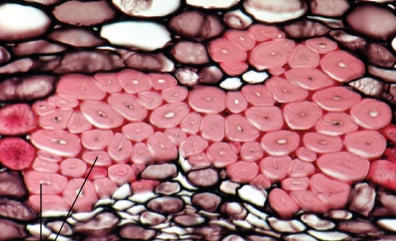Animal, Plant tissues and frog skeleton
1/123
There's no tags or description
Looks like no tags are added yet.
Name | Mastery | Learn | Test | Matching | Spaced |
|---|
No study sessions yet.
124 Terms
Animal tissues
Epithelial
connective
muscular
nervous
Epithelial tissue
covers the outside of the body and lines the organs and cavities within the body
contains cells that are closely packed
shapes of epithelial cells
cuboidal
squamous
columnar
layers of epithelial tissues
simple of stratified
cuboidal epithelium
makes up the epithelium of kidney tubules and many glands, including the thyroid gland and salivary glands
secretion and absorption
simple columnar epithelium
often found where secretion or active absorption is important
for example, this lines the intestines, secreting digestive juices and absorbing nutrients
nonciliated- lines most of the digestive tract, gallbladder, and excretory ducts of some glands
ciliated-lines the small bronchi, uterine tubes, and some regions of the uterus
simple squamous epithelium
thin and leaky
lines blood vessels and the air sacs of the lungs, where diffusion of nutrients and gases is essential
allows passage of materials by diffusion and filtration in sites where protection is not important
kidney glomeruli; air sacs of lungs, blood vessels, and lymphatic vessels
pseudostratified columnar epithelium
forms a mucous membrane that lines portions of the respiratory tract
the beating cilia sweep the film of mucus along the surface
secretion, particularly of mucus, propulsion of mucus by ciliary action
nonciliated type-males sperm-carrying ducts and ducts of large glands
ciliated-variety lines of the trachea, most of the upper respiratory tract
stratified squamous epithelium
regenerates rapidly
commonly found on surfaces subject to abrasion
outer skin and linings of the mouth, anus, and vagina
protects underlying tissues in areas subject to abrasion
nonkeratinized- forms moist linings of esophagus, mouth, and vagina, urethra and anus
keratinized- forms the epidermis of the skin, a dry membrane
simple squamous epithelium
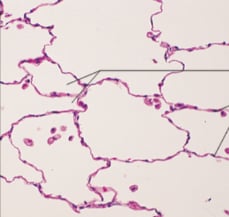
stratified squamous epithelium

simple cuboidal epithelium

stratified cuboidal epithelium
protection
largest ducts of sweat glands, mammary glands, and salivary glands
stratified cuboidal epithelium
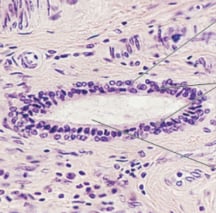
simple columnar epithelium
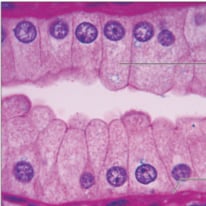
stratified columnar epithelium
basal cells usually combined; superficial cells elongated and columnar
rare in the body; small amount in male urethra and in large ducts of some glands
stratified columnar epithelium

pseudostratified columnar epithelium
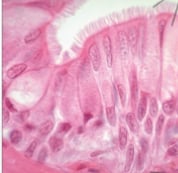
transitional epithelium
resembles both stratified squamous and stratified cuboidal
stretches readily and permits distension of urinary organ by contained urine
lines of the ureters, bladder, and part of the urethra
transitional epithelium
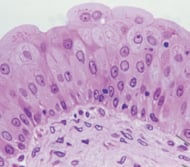
connective tissue
holds many tissues and organs together and in place
contains sparsely packed cells scattered throughout an extracellular matrix
the matrix consists of fibers in a liquid, jellylike, or solid foundation
loose connective tissue
binds epithelia to underlying tissues and holds organs in place
loose weave of its fibers
found in the skin and throughout the body
fibrous connective tissue
dense with collagenous fibers
found in tendons and ligaments
tendons
attach muscles to bones
ligaments
connects bones at joints
bone
mineralized connective tissue
osteoblasts
bone-forming cells that deposit a matrix of collagen
adipose tissue
stores fat in cells distributed throughout its matrix
insulates the body and stores fuels as fat molecules
each of these cells contain a large fat droplet that swells when fat is stored and shrinks when the body uses that as fuel.
cartilage
contains collagenous fibers embedded in a rubbery protien-carbohydrate complex called chondroitin sulfate
chondrocytes
cells that secrete the collagen and chondroitin sulfate, which together make a cartilage that is replaced by bone as the embryo matures
blood
has a liquid extracellular matrix called plasma, which consists of water, salts, and dissolved proteins
erythrocytes
red blood cells carry oxygen
leukocytes
white blood cells which function in defense
fluid connective tissues
has a liquid extracellular matrix
support connective tissues
provides rigid structural support
loose connective tissue
more ground substance, fewer fibers
fibrous connective tissue (dense)
more fibers, less ground substance, for strength
loose connective tissue

fibrous connective tissue
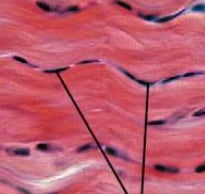
bone
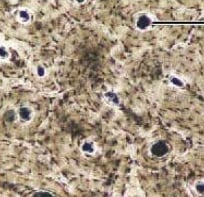
adipose tissue
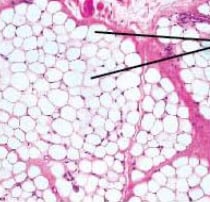
cartilage
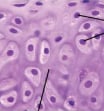
blood
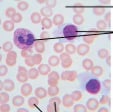
areolar connective tissue
holds organs in place, surrounds blood vessels and nerves
under the skin, around the organs, around blood vessels
reticular connective tissue
forms a supportive framework for soft organs
liver, kidney, lymphatic organs
provides structural support while allowing movement of cells
hyaline catrilage
nose, joints, ribs
reduces friction in joints
resilience
elastic cartilage
flexible but maintains shape
ear lobes, epiglottis
fibrocartilage
shock absorber
intervertebral discs
menisci
spongy bone
found in the ends of long bones, produces blood cells
areolar ct

reticular ct
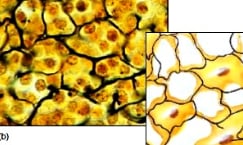
hyaline cartilage
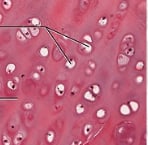
elastic cartilage
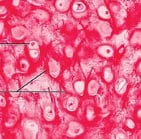
fibrocartilage
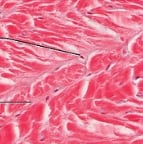
skeletal muscle
voluntary movement
smooth muscle
involuntary movement
cardiac muscle
contraction of the heart
skeletal muscle
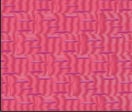
smooth muscle
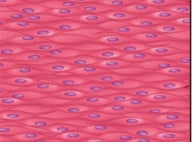
cardiac muscle

dermal tissues
acts as the skin for the plant
monocot stem
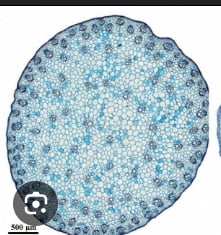
dicot stem
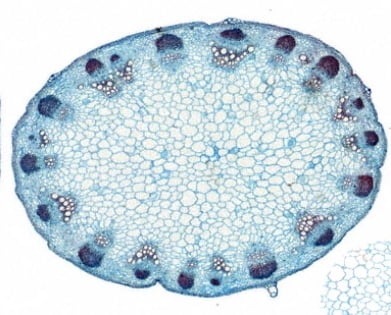
phloem
positioned towards the outside
xylem
positioned inside
monocot root
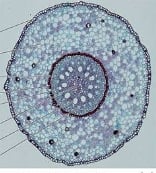
dicot root
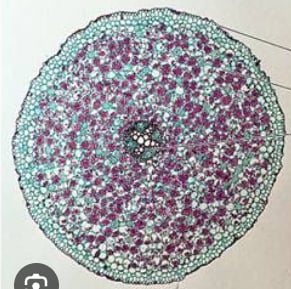
perenchyma
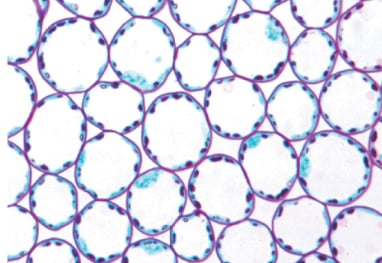
collenchyma
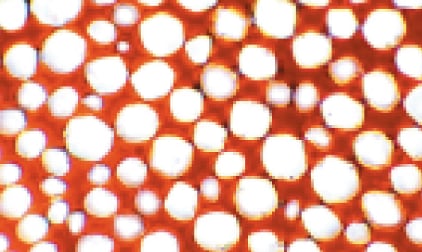
stone cells /sclereids (sclerenchyma)

fiber cells
